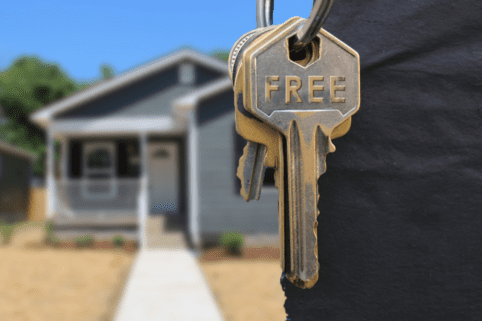The Pitfalls of Housing First: A Better Path to Solving Homelessness
 James Whitford
James Whitford
Founder & CEO
Read more from James
Listen to this article:
Last week, a headline in my local paper read, “Local Coalition Receives $692,793 Grant to Help Homeless.” Part of last year’s White House “All In” plan to solve homelessness, it’s one of thousands of grants recently awarded by the Department of Housing and Urban Development (HUD). The cost is staggering: over three billion dollars, which is the largest amount of annual federal funding ever provided through HUD’s Continuum of Care program. As you might guess, it was lauded as the grand solution for the homeless in our city.
My experience leading a poverty-fighting mission for the last twenty-four years tells me otherwise. Indeed, last spring, I lamented the plan. It doubles down on the Housing First approach to homelessness, which has failed miserably. Over the last 10 years, the steady increase of HUD’s investment in housing has more than doubled while unsheltered homelessness in the same decade has increased 44%. That means an astonishing 239,000 people currently live on American streets.
While tragic, that’s not surprising. The plan bars any requirement for entry, “such as sobriety, treatment, or service participation.” For Richard, the dream of free housing became a recurring nightmare. In February of 2021, a federal housing program handed him a set of keys while he was in the throes of alcoholism. By September, he was back on the streets. After repeating that cycle three times, he’s homeless today. For him, Ravon, Stacy, and countless others who thought a house was the answer to their homelessness, Housing First has merely incubated deeper issues and needs that a roof and set of keys can never address.
After watching this cycle for years, all I can say is a top-down plan like “All In” is like a bad bet on a pitiful poker hand. The federal government should fold. There’s a better path from the streets to success, powered by compassionate community members who coordinate their services, with no need for help from Uncle Sam.
The young man I greeted with a high-five last week when he pulled up after work in his SUV knows that journey. Three years ago, I saw Josh lying on a public sidewalk wadded up in a blanket. Knowing he was an able-bodied young man with ample opportunity to be productive at our mission’s workshop, I challenged him. “Josh, I don’t ever want to see you lying on a sidewalk in the middle of the day again.”
I never did. He came to our emergency shelter, earned his bed and meals in our workshop, and began setting and meeting goals before enrolling in our men’s long-term residential recovery program. There, he landed a job with one of our partner businesses, earned his GED, and moved into transitional housing run by a Christian ministry that’s one of our mission partners. He finally graduated from our program and reunited with his wife and kids.
It’s the powerful redemption story of a man who once told me, “My mother was a dope cook, I was in foster care most of my youth, and then I was homeless. Your mission saved my life.” Josh’s inspiring transformation wasn’t accomplished with government incentives or free housing. Faith coupled with encouragement, accountability, and the development of deep community relationships were the game-changers for him.
HUD just promised three billion dollars to put people in houses. Even if they deliver on it, they’ll never deliver what Josh and countless others have received from our mission and hundreds of others like it – purpose, belonging, and joy. There’s a better way to help someone than simply giving him what he doesn’t have. Real compassion equips him to get what he needs. That’s the hand we should bet on.
This article was originally published by DC Inside Sources.

This article is just the tip of the iceberg for the practical resources available through the True Charity Network. Check out all of the ways the network can help you learn, connect, and influence here.
Already a member? Access your resources in the member portal.




